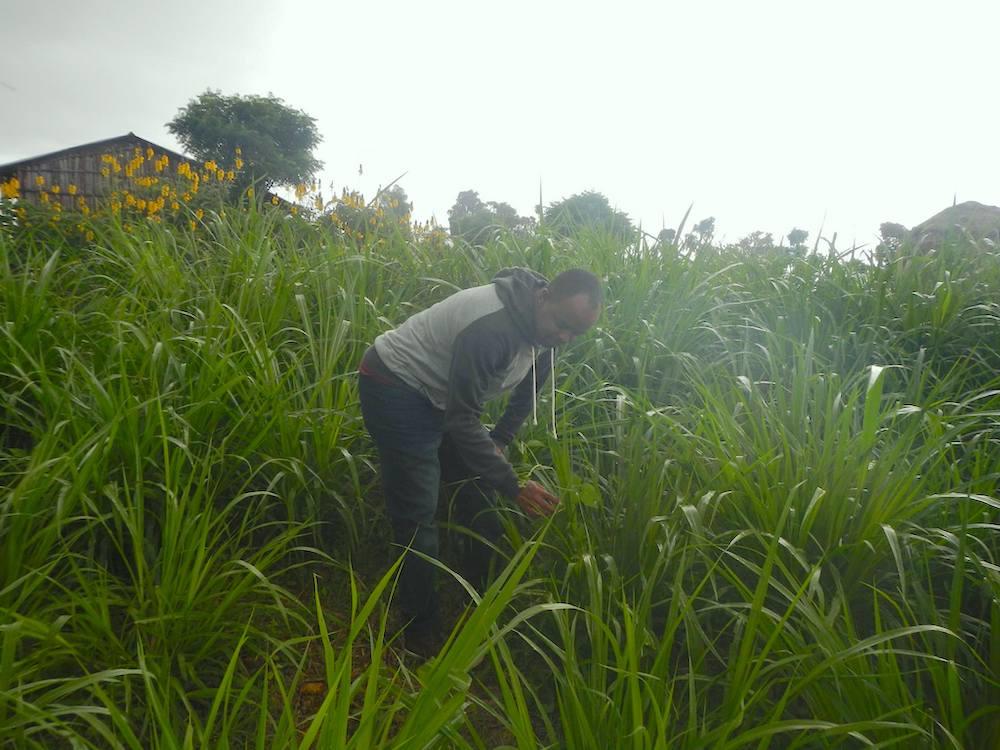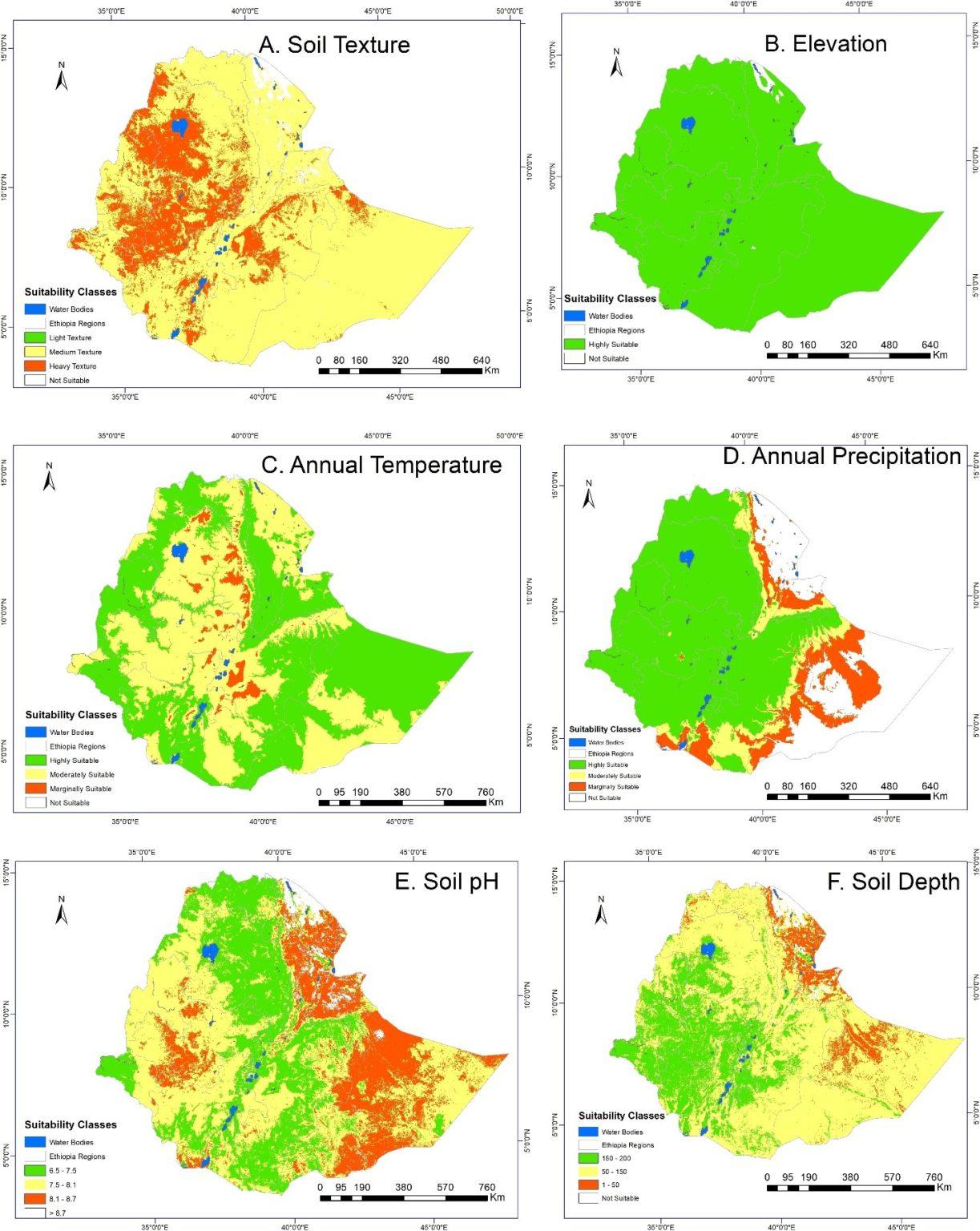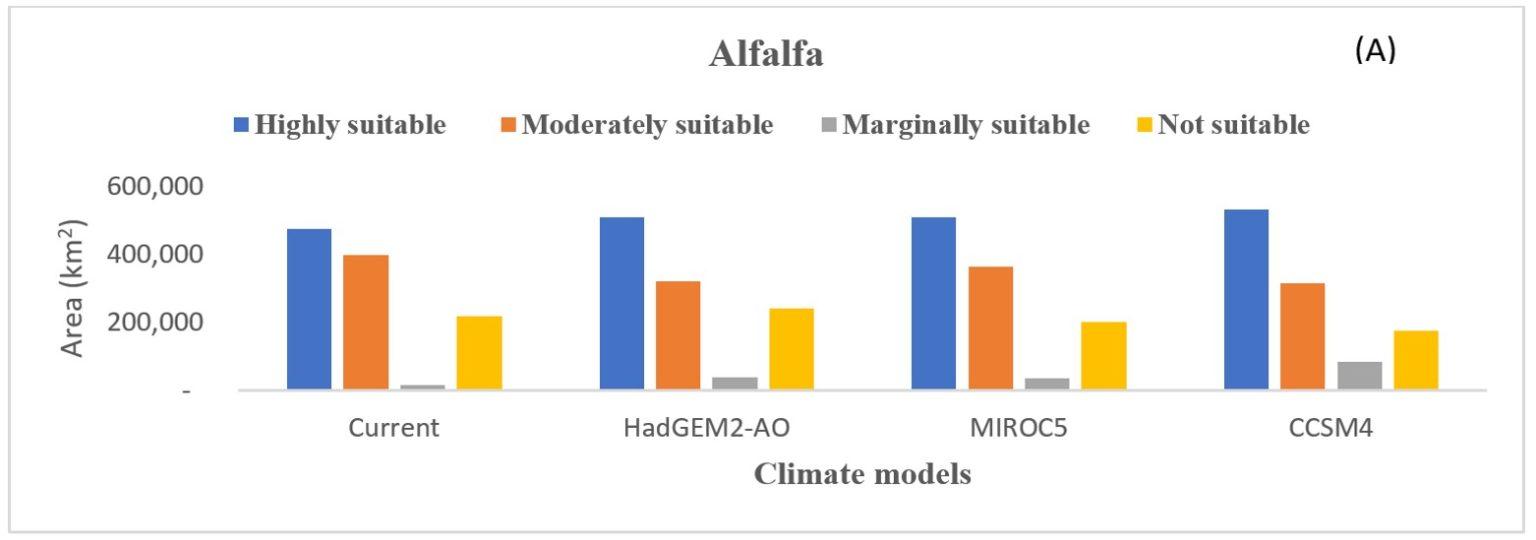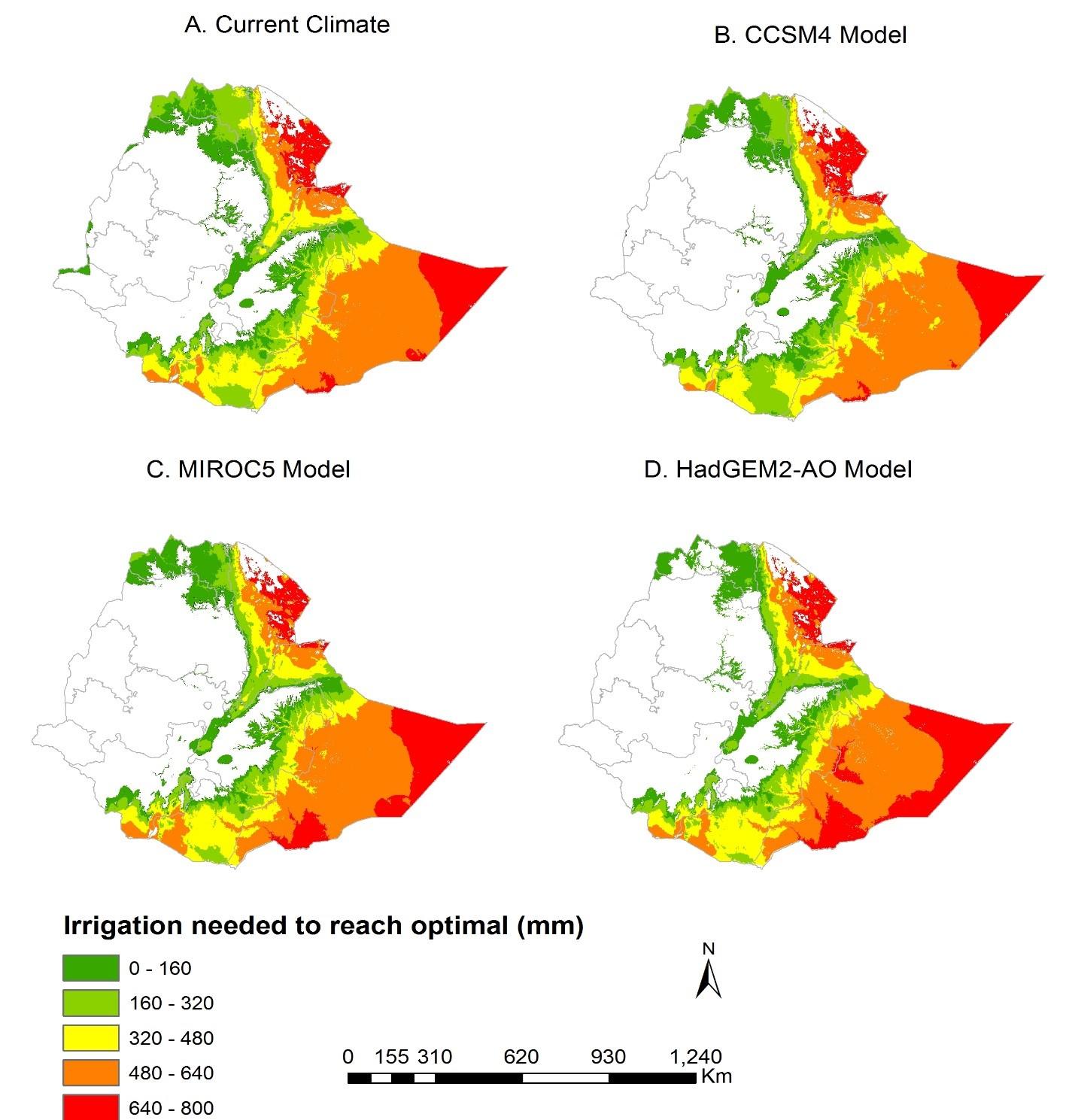Research Articles Where can we grow Alfalfa?

Researchers assess land suitability and potential climate change impacts on alfalfa (Medicago sativa) production in Ethiopia.
Ethiopia’s livestock sector represents an important source of food and livelihoods. However, livestock are at risk when there are not enough resources to support production, especially during drought periods. Climate variability such as frequent droughts compromises production of sufficient feed and fodder, making the livestock sector vulnerable to shocks.
Livestock productivity mostly declines during the dry season, when quality and quantity of forage is limited. This is a major constraint for livestock producers, making them unable to meet the necessary nutritional requirements for livestock: decreases in pasture production coupled with limited water availability lead to weakening of livestock (including death during droughts) that reduce the value of the livestock, and household incomes. Droughts, seasonality and reliance on rainfall for forage production in Ethiopia and many sub-Saharan African countries therefore expose livestock production to significant risks.
Pastoralists and farmers depend on natural grazing systems to feed their livestock for commercial and household consumption to meet nutritional needs. However, in many cases due to drought and climate variability, the livestock feed and fodder quality deteriorate. Furthermore, due to rapid increase of human population and urbanization, famer and pastoralist reliance on natural pasture and not knowing what and where to grow drought and climate resilient fodder has hindered the livestock sector. To overcome such limitation and improve livestock production requires innovative ways to address this challenge faced by livestock farmers and producers.
Methods to identify suitable land for growing Alfalfa in Ethiopia
We have applied a geospatial analysis approach to map the potential areas for livestock fodder production in Ethiopia. Multi criteria evaluation (MCE) and an analytical hierarchy process using climate, soils, and elevation information to map suitability of lands for alfalfa fodder growth show promise for evaluating current and future production areas under rainfed conditions. We evaluated the climate change impacts on alfalfa with the projected 2050 rainfall and temperature from 3 Global Circulation Models and substituted the projections into the MCE. Effects of climate change were evaluated by comparing the expansion and contraction of suitability classes in the climate change scenarios versus that of current conditions.

Land suitability maps for Alfalfa (Medicago sativa) based on soil texture (A), Elevation (B), Annual temperature (C), Annual precipitation (D), Soil pH (E) and Soil depth (F).
Identifying suitable lands to grow Alfalfa and climate change impact in Ethiopia
The results indicate that the total area highly suitable for Alfalfa under the current climate scenarios covers 472,153 km2 (43% of the total land in Ethiopia), whereas 397,133 km2 (36%) are moderately suitable and 16,165 km2 are marginally suitable land. Under the future climate conditions, the highly suitable area for alfalfa was 531,769 km2 (48%), 508,615 km2 (46%) and 507,218 km2 (46%) under CCSM4, HadGEM2-AO, MIROC5 climate models, respectively.

Alfalfa evaluated under current climate conditions (1970-2000) and three global circulation models (HadGEM2-AO, MIROC5, and CCSM4,) representing the 4.5 Representative Concentration Pathway (RCP) for the period of 2041-2060 in Ethiopia.

Alfalfa suitability classes (i.e., high, moderate and marginal) under (A) current climate (1970–2000) and three global circulation models ((B) CCSM4, (C) MIROC5, and (D) HadGEM2-AO) representing the 4.5 representative concentration pathway for the period of 2041–2060 in Ethiopia.
What if there isn’t enough rain for optimal alfalfa growth (supplemental irrigation needs)?
Examining the shift in land suitability and supplemental irrigation needs for alfalfa production due to climate change is important. Taking rainfall as a major determinate for fodder production, the impact of climate change on future rainfall availability was evaluated. The water deficit ranges were classified into five equal intervals, and the area that falls under a 20% water deficit for the respective climate models. North central parts of the country can optimally produce alfalfa only using rainfall while the eastern part of the country may require irrigation amount of up to 800 mm of water to produce optimal production of alfalfa. Under current and future climate scenarios, the 20% rainfall deficit areas vary across all the climate models.

The spatial distribution of the rainfall deficit arears (mm) for alfalfa under current climate (1970-20102000) and three global circulation models/scenarios (CCSM4, HadGEM2-AO and MIROC5) representing 4.5 Representative Concentration Pathway (RCP) for the period of 2041-2060 in Ethiopia. The water deficit indicates the amount of irrigation needed to reach optimal crop water requirement.
From the policymaker’s perspective…
According to Dr. Fikru Regassa, State Minister, Ministry of Agriculture:
“This work deals with the evaluation of land areas suitable for alfalfa fodder production in Ethiopia under different climate change scenarios. Not many studies have been done on this topic and this clearly shows potential areas for intervention to improve the livestock sector. Similarly, the studies could help to attract the private sector, i.e. investors to invest in the feed production business. It is important to bring a climate change lens to increase the community’s resilience toward climate shock and drought. And it is clear that climate change has an impact on livestock production and such studies will help to formulate policies around livestock.”
The findings of this study provide evidence to development planners, livestock producers and policymakers for current and future climate change scenario-based land suitability, climate change risk and supplemental irrigation need analyses for crop and feedstock productivity improvement in Ethiopia. Furthermore, the results provide guidance for where to grow alfalfa considering ecological and climate variability, as well as informing a need for supplemental irrigation systems to grow this feed stock optimally and thereby support the livestock sector and resource-poor vulnerable communities that depend on it.
